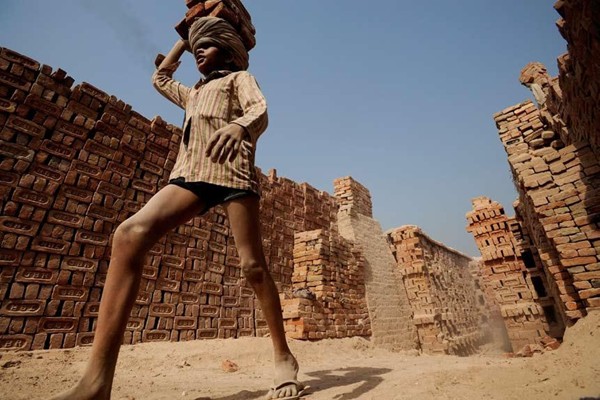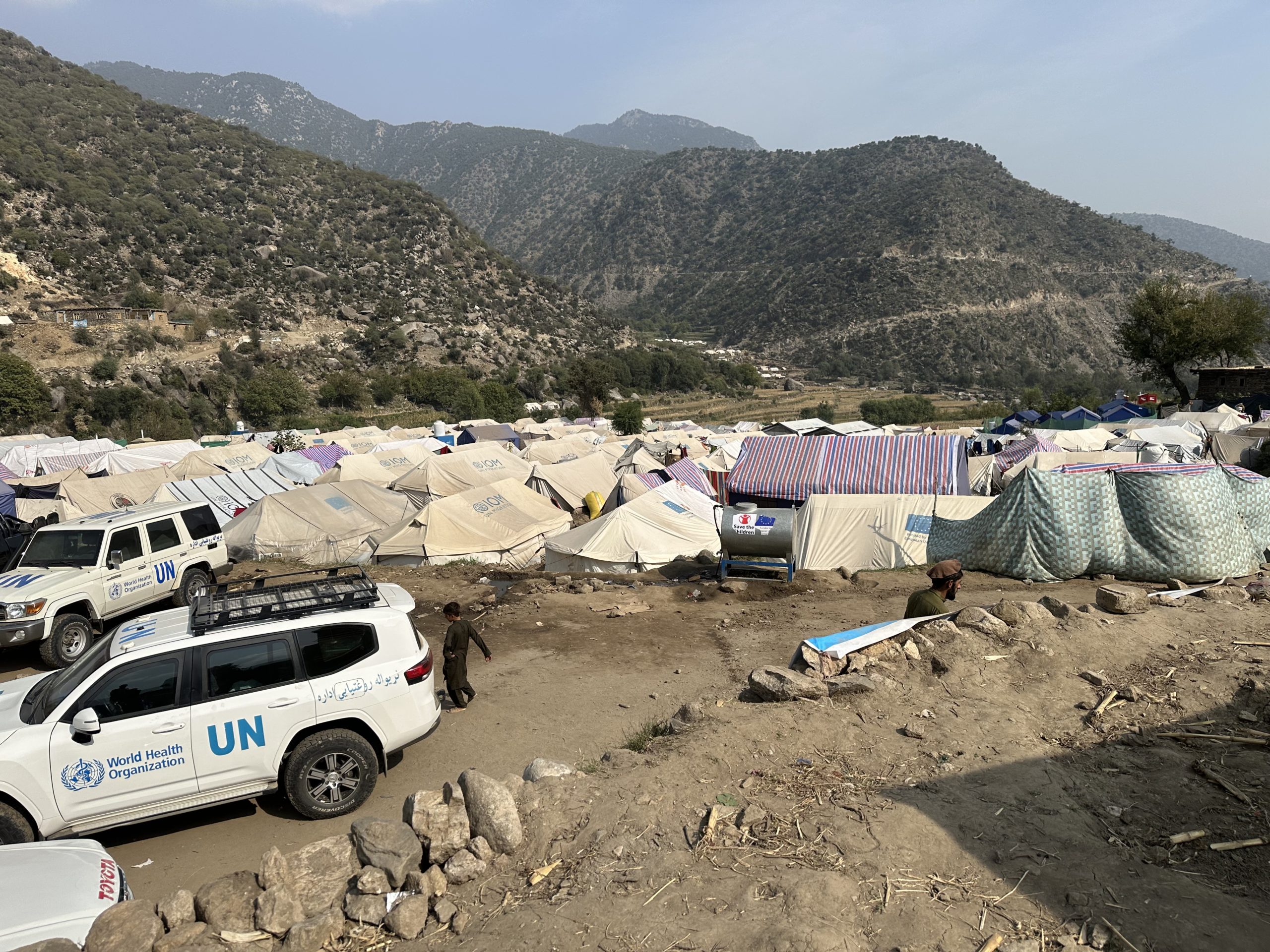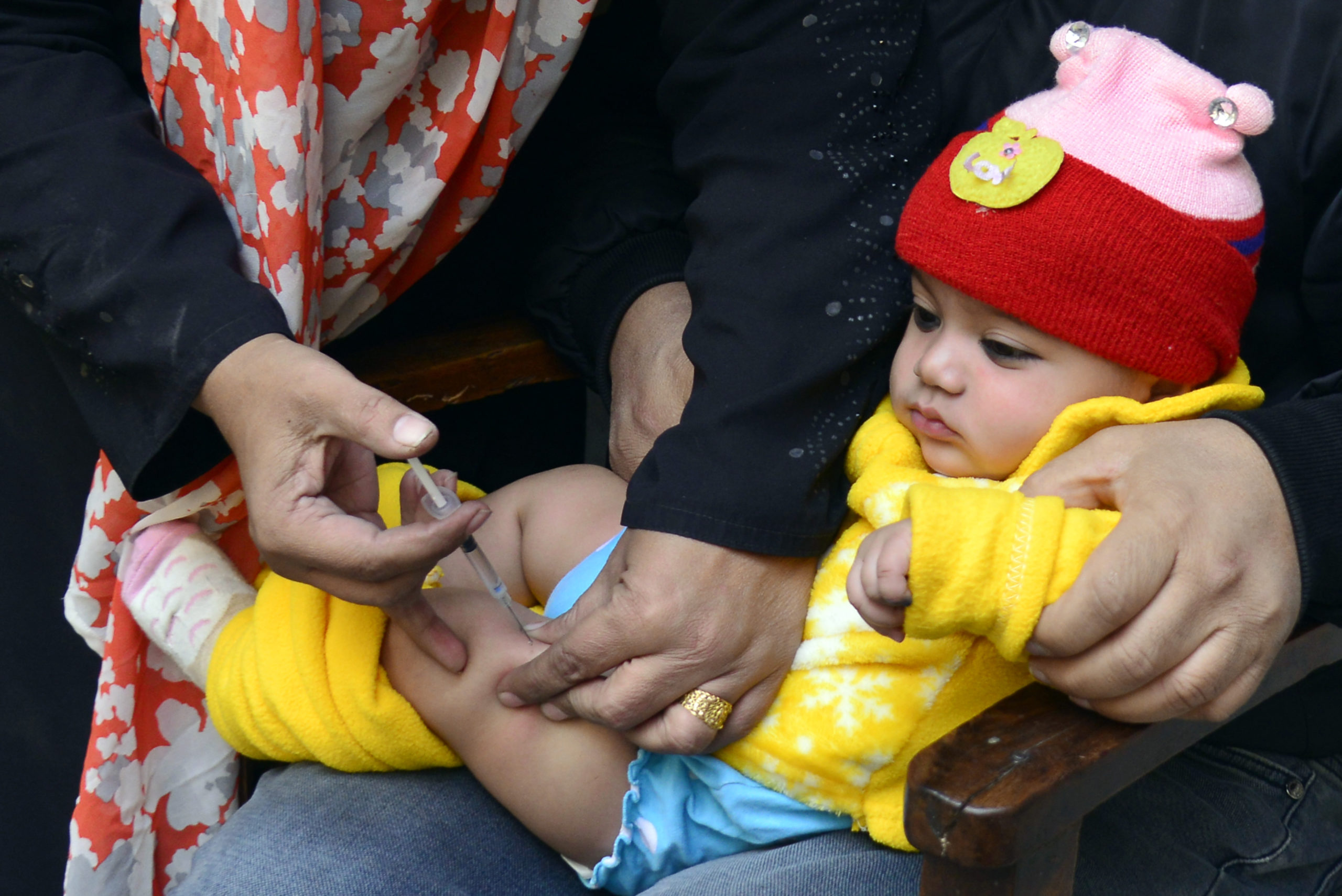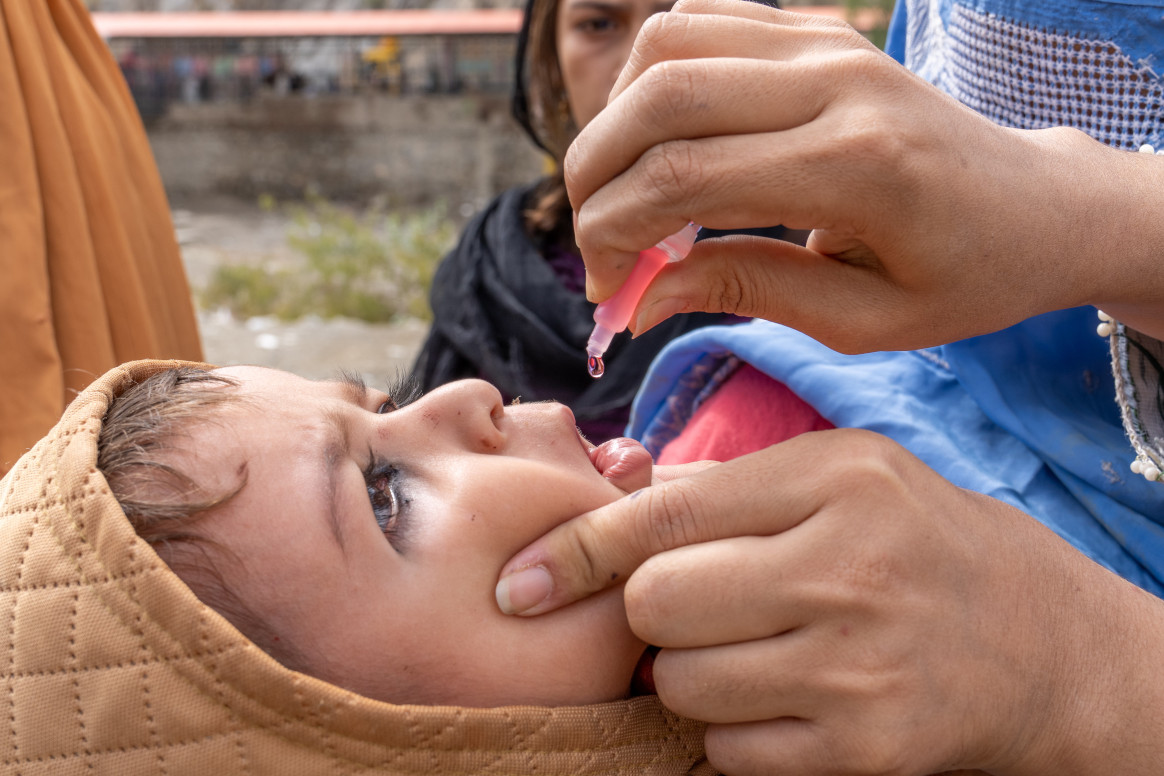 25-year-old Geeta, a mother of three, has her priority clear – making 300 bricks a day. “I don’t have time to even think of taking my children to the Aganwadi centre for routine immunization,” she admits.
25-year-old Geeta, a mother of three, has her priority clear – making 300 bricks a day. “I don’t have time to even think of taking my children to the Aganwadi centre for routine immunization,” she admits.
Hundreds of such mothers work in brick kilns in Bihar, northern India; coming from far-away states like Assam, Jharkhand, West Bengal and Andhra Pradesh in search of a livelihood. Most of them are unskilled labourers and keep migrating from one place to another. As a result, their children often miss immunization, including polio.
With increased focus on migrants, UNICEF initiated efforts to generate awareness on polio among brick kiln workers. One way was through getting polio messages painted on brick kiln chimneys. The message was clear and simple – Polio-free India, two drops of protection, every child every time.
“Mobilizing brick kiln owners for getting polio messages painted on chimneys was tough,” says UNICEF’s community mobilizer Mohammad Mannan Alam who works in Araria district of Bihar. “Through our persistent efforts, we convinced them and now they whole-heartedly support the programme,” he says with a broad smile on his face.
It is encouraging that brick kiln owners have come forward in the fight against polio. “We can eradicate polio from Bihar, but everybody has to pitch in”, asserts Ravindra Singh, owner of Kanchan brick kiln in Maner block, Patna. “I am fully committed to the campaign and am happy to have the polio message painted on the chimney of my brick kiln,” he says. Brick kiln workers are happy with the developments. “Every time I look up, it reminds me of getting my child polio vaccine every time it is offered,” says Sunita, a mother working at Hero Brick kiln in Patna, Bihar.
When the mobile teams of polio vaccinators visit brick kilns, the chimneys are a reminder that this dose of oral polio vaccine (OPV) and the subsequent doses are extremely important for every child up to five years to protect against the disease, which cripples for life, has no cure, but can be prevented by taking OPV each time it is offered.</p.
The migrants working in brick kilns are among the highest risk populations for polio. Special interventions are made to track them, counsel them, to ensure they are covered during each polio campaign and also to study their migration patterns for interventions in their home states.



